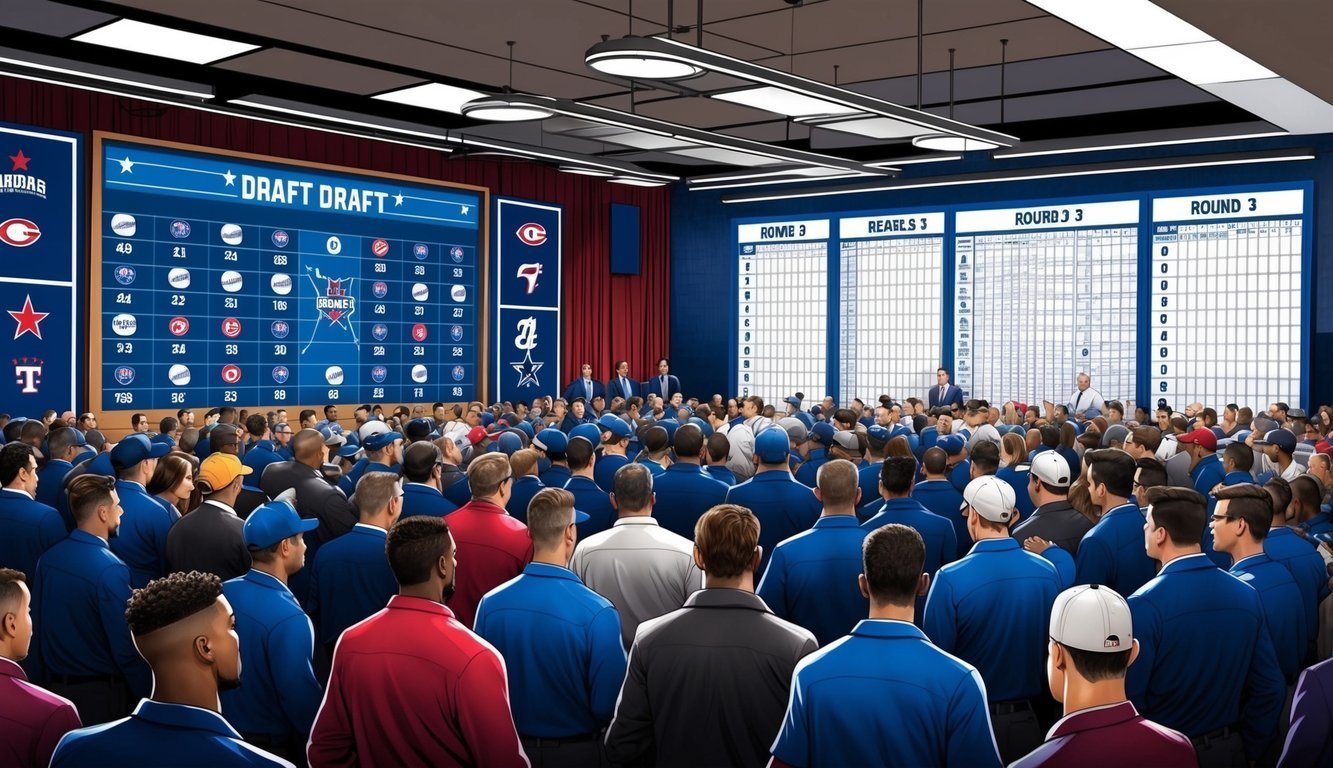The Major League Baseball Draft is a crucial event for aspiring baseball players and professional teams alike. Teams select amateur players to potentially join their organizations.
This format allows clubs to strategically build their talent pipelines and gives young athletes a shot at reaching the big leagues.
MLB teams gather each July to make their selections during All-Star week.
The draft order is determined by a combination of the previous season’s records and a lottery system for the top picks.
Over the course of three days, hundreds of amateur players from high schools and colleges across the country anxiously await their chance to hear their names called.
While 20 rounds may seem extensive, it’s actually a streamlined version compared to past years.
The draft used to span 40 rounds or more, but recent changes have condensed the process.
This new format maintains the excitement and opportunity for both teams and players while adapting to the evolving landscape of professional baseball.
Understanding the MLB Draft Structure
The MLB Draft has a unique structure that sets it apart from other sports drafts.
It spans multiple days and consists of numerous rounds, allowing teams to select a wide range of amateur talent.
Understanding Rounds and Picks
The MLB Draft currently consists of 20 rounds.
Each round allows all 30 MLB teams to make one selection, resulting in about 600 total picks.
The draft takes place over three days, with the first two rounds on day one, rounds 3-10 on day two, and rounds 11-20 on the final day.
Teams pick in reverse order of their previous season’s standings.
This system aims to give struggling teams better access to top talent.
Compensation picks may be awarded between rounds, slightly increasing the total number of selections.
The Significance of First-Round Picks
First-round picks are highly valued in the MLB Draft.
These selections often target the most promising high school and college players.
Teams invest significant time and resources scouting potential first-round choices.
Many first-round picks go on to become MLB stars.
However, success is not guaranteed.
Teams must weigh factors like a player’s potential, signability, and development timeline when making these crucial decisions.
Later Rounds and Their Role
While early rounds grab headlines, later rounds play a vital role in building organizational depth.
Rounds 11-20 allow teams to take chances on high-upside players who might have been overlooked.
Later rounds often focus on college seniors or players with specific tools teams hope to develop.
These picks can yield hidden gems who outperform their draft position.
Successful late-round selections provide tremendous value to MLB clubs.
Teams use these rounds to address positional needs and add depth to their minor league systems.
Significant Changes and Their Impact
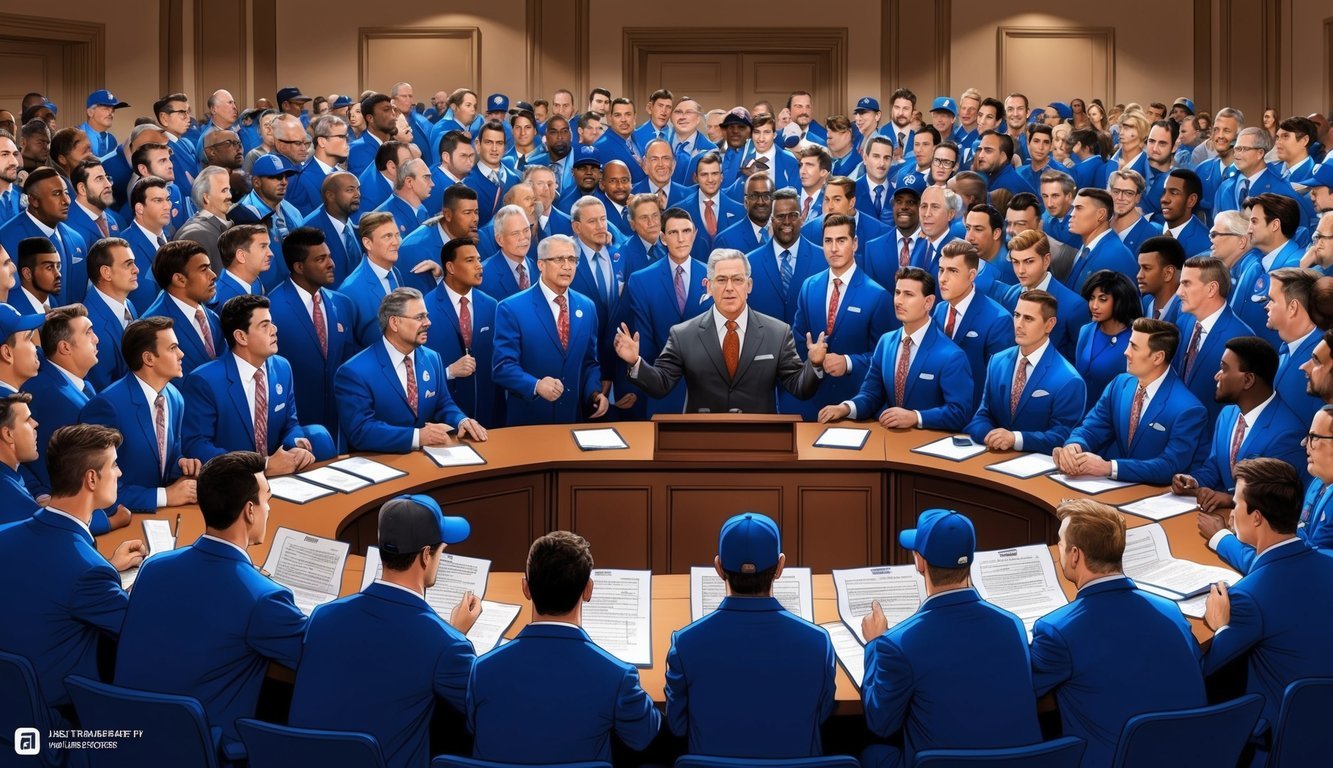
The MLB Draft has undergone notable changes in recent years, reshaping the landscape for teams and prospects alike.
These modifications have had far-reaching effects on player selection and team strategies.
Impact of the Pandemic on Draft Rounds
The COVID-19 pandemic prompted significant alterations to the MLB Draft format in 2021.
The number of rounds was reduced from 40 to just 5, drastically cutting the pool of draftees.
This change forced teams to be more selective and strategic in their picks.
Many talented players who might have been drafted in later rounds missed out on opportunities.
The shortened draft also led to an influx of undrafted free agents, giving teams a chance to sign promising players outside the draft process.
The Implementation of Competitive Balance Rounds
MLB introduced Competitive Balance Rounds to help level the playing field for smaller market teams.
These rounds consist of Competitive Balance Round A and Competitive Balance Round B. These rounds provide additional draft picks to teams that have lower revenues or are in smaller markets, giving them a better chance to build competitive rosters.
This effort to promote fairness and parity in baseball mirrors past initiatives, such as the formation of the American League, which aimed to create more opportunities for teams and players.
By awarding extra selections, MLB ensures that smaller market teams can acquire young talent and remain competitive in the long term.
Round A takes place after the first round, while Round B follows the second round.
Teams eligible for these picks are determined by market size and revenue.
These additional rounds give qualifying teams extra selections, potentially boosting their chances of acquiring top talent.
It’s an innovative approach to maintaining competitive balance across the league.
The introduction of these rounds has added a new layer of strategy to the draft, as teams must consider how to best utilize these valuable extra picks.
Team-Specific Draft Strategies
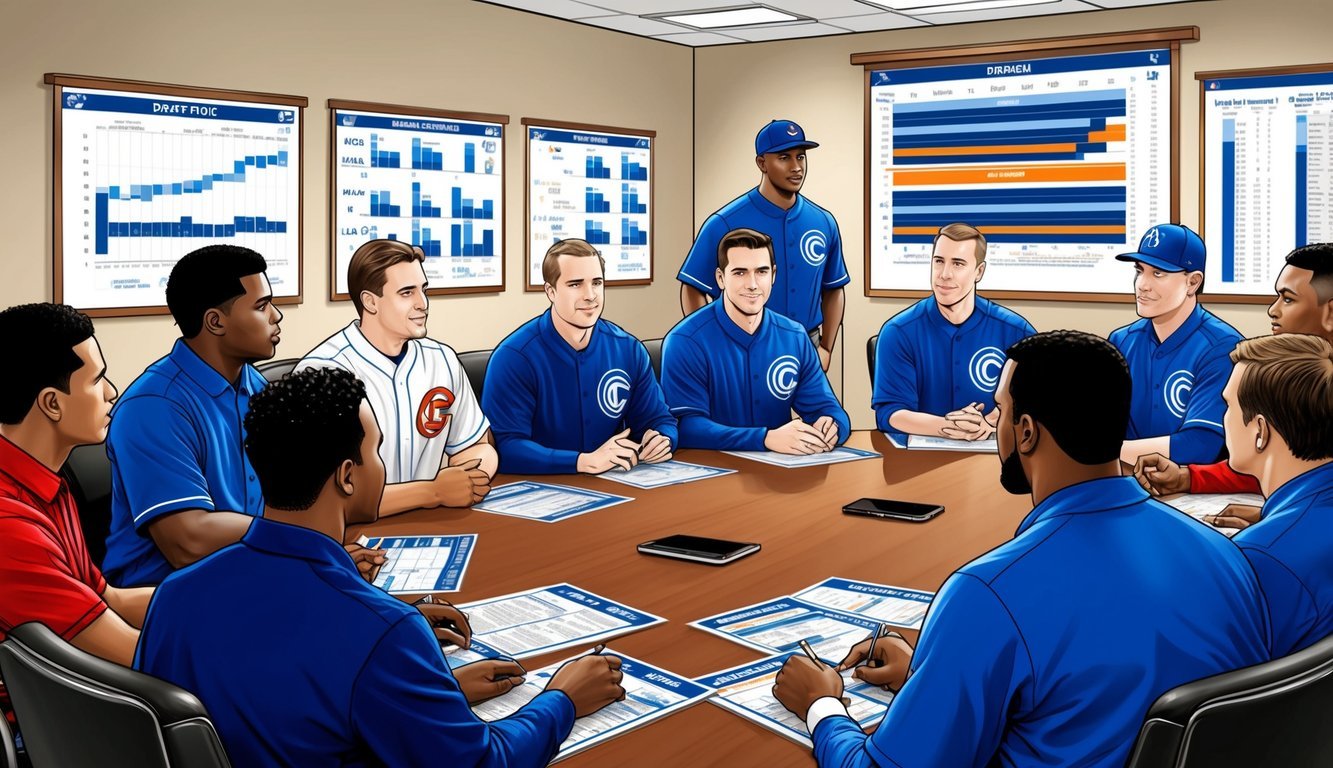
MLB teams approach the draft with unique strategies based on their market size, budget, and organizational needs.
These approaches can significantly impact a team’s long-term success and competitiveness.
The Choices of High-Profile Teams
The Dodgers, Yankees, and Red Sox often leverage their financial muscle in the draft.
They may target high-upside players who slip due to signability concerns.
These teams can afford to offer larger signing bonuses, sometimes exceeding slot values.
The Yankees, for instance, have a history of drafting prep pitchers with high ceilings.
The Dodgers frequently balance their picks between college performers and high-potential high schoolers.
Big-market clubs like the Angels and Astros may focus on college players who can move quickly through their farm systems.
This strategy aims to supplement their major league rosters with cost-controlled talent in the near term.
Draft Dynamics and Smaller Market Teams
Smaller market teams like the Pirates and Cardinals often employ different tactics.
They may prioritize safer picks with higher floors to ensure a steady pipeline of talent.
The Pirates have recently focused on college hitters early in drafts.
This approach aims to add advanced bats to their system quickly.
St. Louis has found success balancing college and high school selections.
They often target players who fit their organizational philosophy of fundamentally sound baseball.
Teams in smaller markets might also emphasize drafting local talent.
This strategy can help build fan connection and potentially lead to hometown discounts in future contracts.
Draft position also plays a crucial role.
Higher picks allow teams like the Rangers to select premier talent, while lower picks may lead to more creative strategies.
Financial Considerations in the MLB Draft
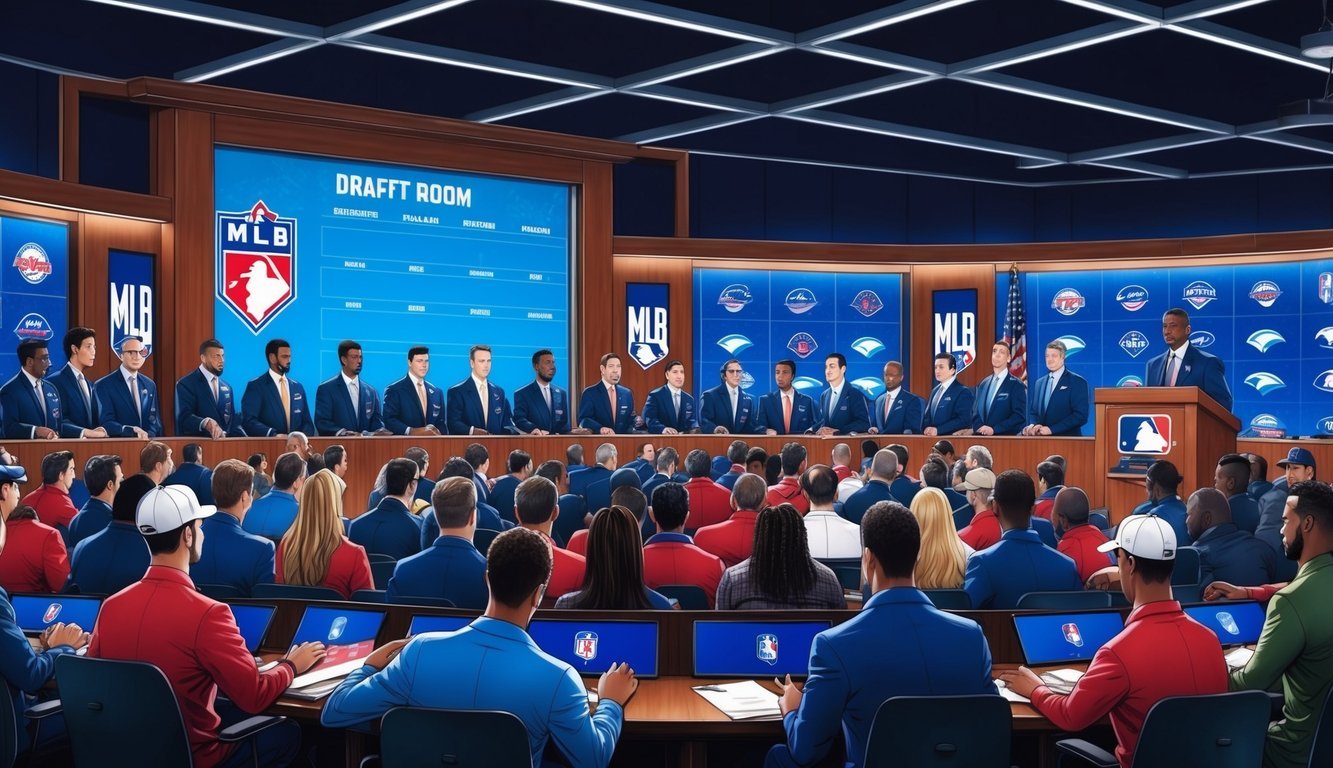
The MLB draft involves complex financial aspects that teams must navigate carefully.
Teams balance their budgets with player valuations to make strategic selections.
The Role of Slot Values and Bonus Pools
Each pick in the first 10 rounds of the MLB draft is assigned a slot value.
These values decrease as the draft progresses, with the first overall pick having the highest value.
In 2024, the top pick’s slot value is $10.6 million.
Teams receive a bonus pool based on the combined slot values of their picks.
This pool gives clubs flexibility in negotiations.
They can offer a player more or less than the slot value, as long as the total spent doesn’t exceed their pool.
Smart teams use this system to their advantage, sometimes signing top picks under slot to allocate more money to other selections.
Understanding Penalties and Compensation Picks
MLB has strict rules to prevent teams from overspending in the draft.
Exceeding the bonus pool by 0-5% results in a tax on the overage.
More severe penalties kick in for higher overages:
- 5-10% over: Loss of a first-round pick
- 10-15% over: Loss of first and second-round picks
- 15%+ over: Loss of two first-round picks
Teams can gain extra picks through the competitive balance rounds or as compensation for losing qualified free agents.
These picks can be traded, adding another layer of strategy to draft preparations.
Clubs must weigh the potential of amateur talent against the financial and future draft pick costs of signing them.
This balancing act is crucial for building a strong farm system while staying within budget constraints.
The Journey of Draft Picks to The Show
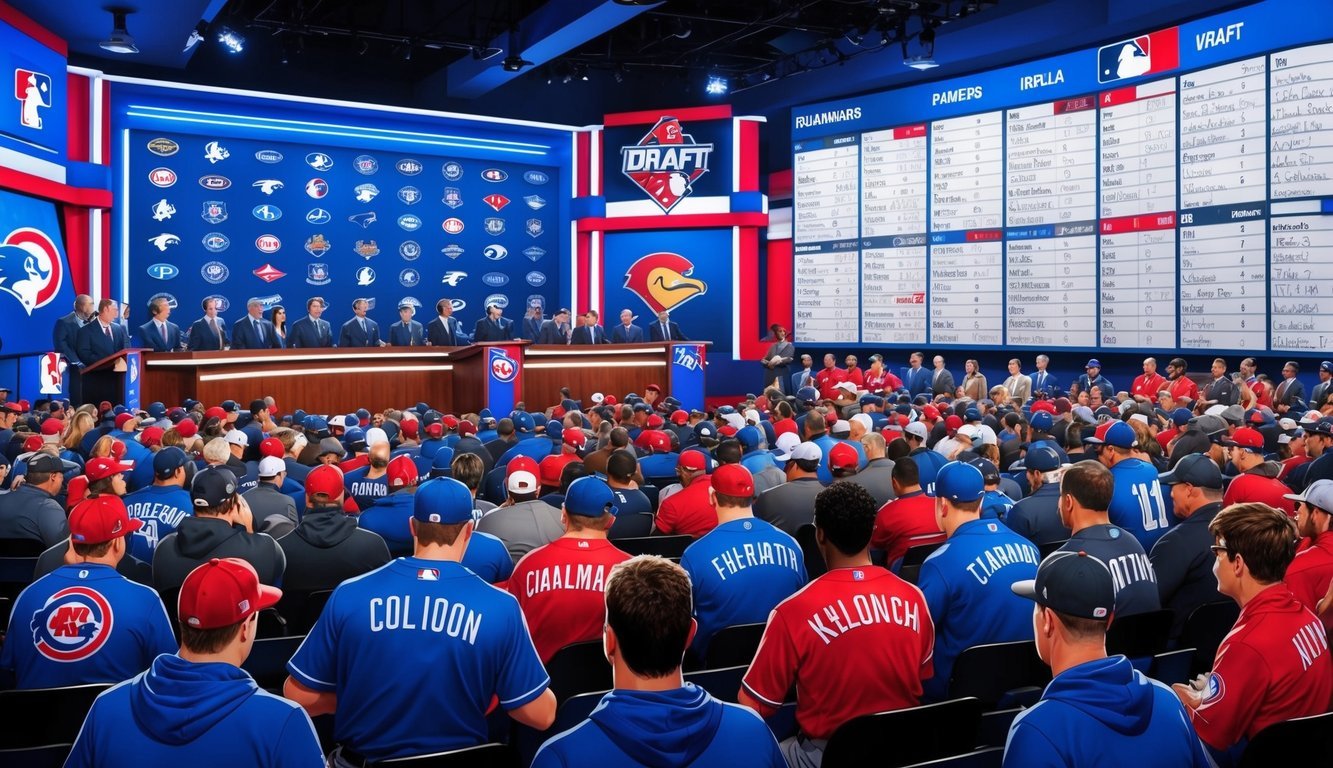
Draft picks face a challenging path from selection day to their MLB debut.
Hard work, talent, and a bit of luck are needed to reach the highest level of professional baseball.
From Draft Day to MLB Call-Up
After the draft, players sign with their new organizations and begin their professional careers.
Most start in rookie or low-A ball, working their way up through the minor league system.
This journey can take anywhere from a few months to several years.
Top prospects may advance quickly, while others need more time to develop.
Players face intense competition at each level, honing their skills and adapting to tougher opponents.
Injuries, slumps, and roster decisions can impact a player’s progress.
Some draft picks never make it to the majors, while others become unexpected success stories.
Success Stories and The Farm System
MLB teams use their farm systems to develop talent.
These minor league affiliates serve as proving grounds for young players.
Some recent draft success stories include:
- Aaron Judge (2013, 32nd overall)
- Mike Trout (2009, 25th overall)
- Mookie Betts (2011, 5th round)
These players went from draft picks to MLB superstars, thrilling fans with their performances.
The farm system also allows teams to evaluate talent over time.
Coaches and scouts work closely with prospects, helping them improve and prepare for The Show.
Not every draft pick becomes a star, but many contribute valuable depth to their organizations.
The journey from draft day to MLB debut is a testament to players’ dedication and the effectiveness of team development programs.
